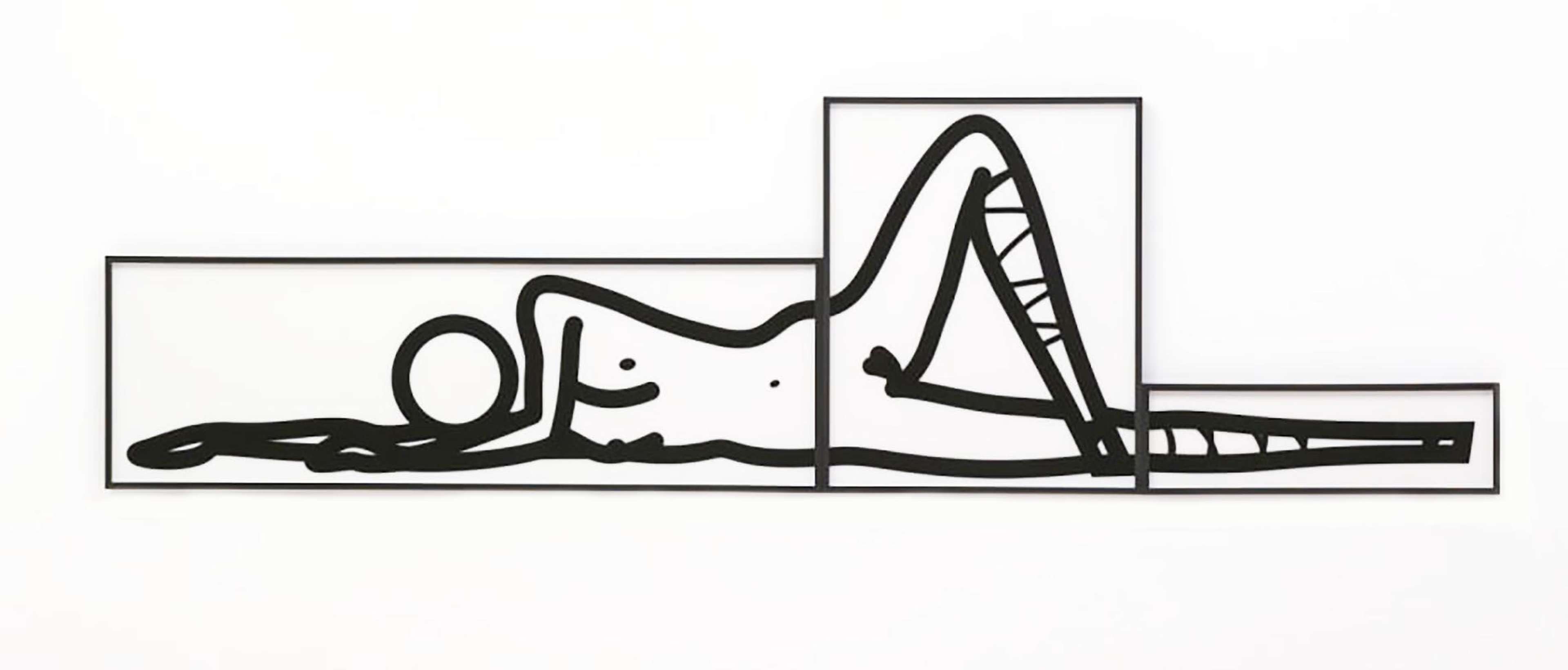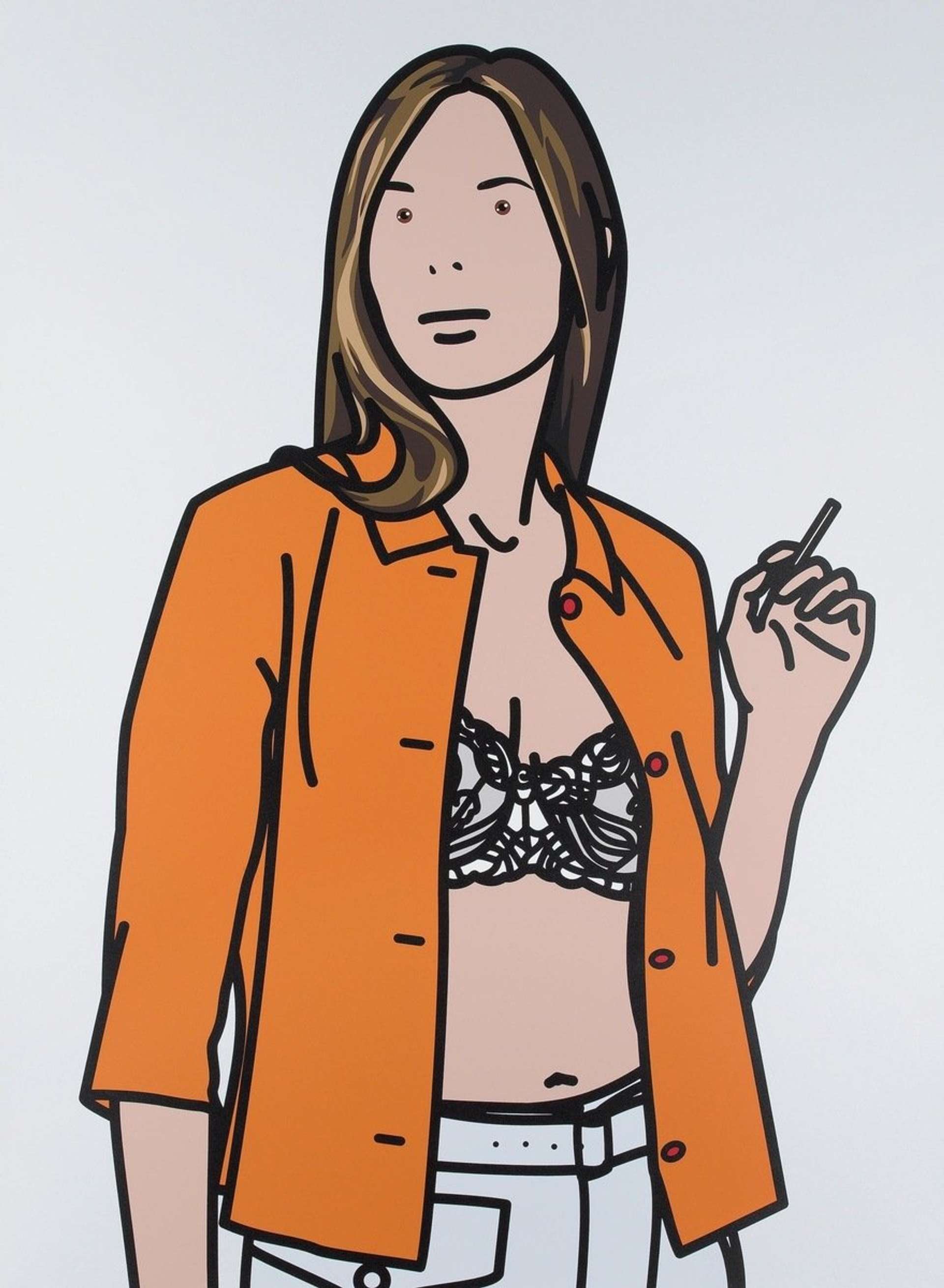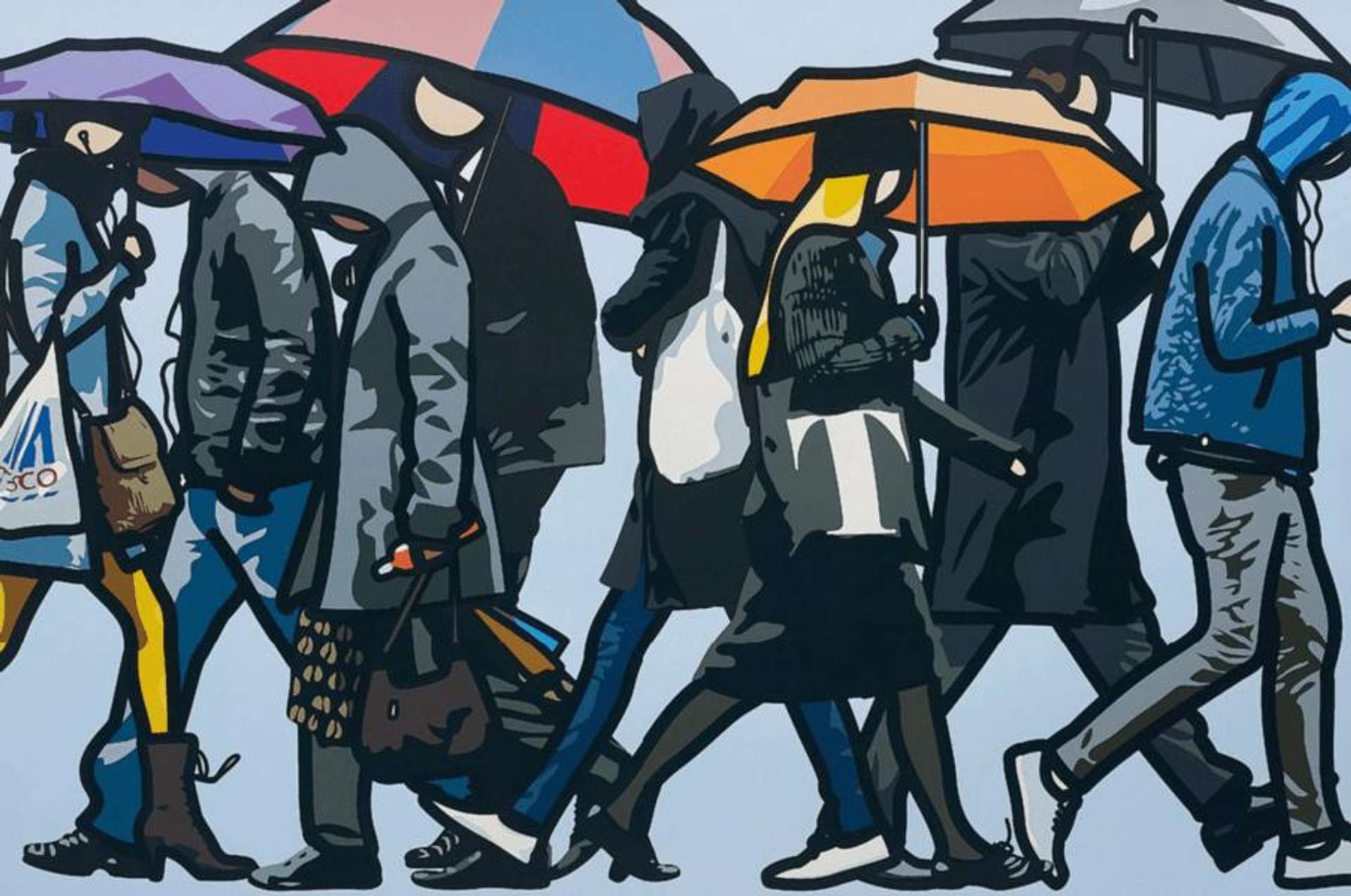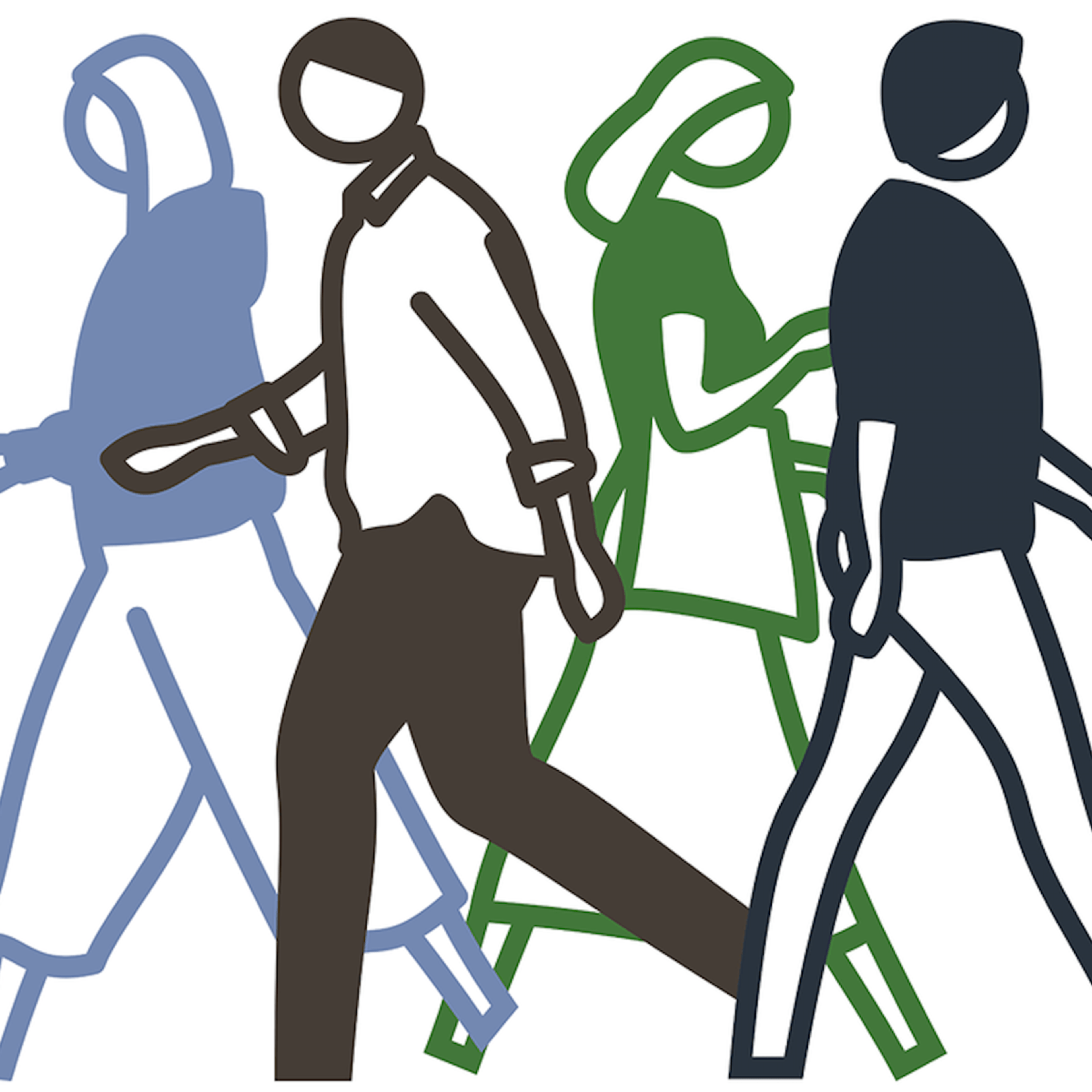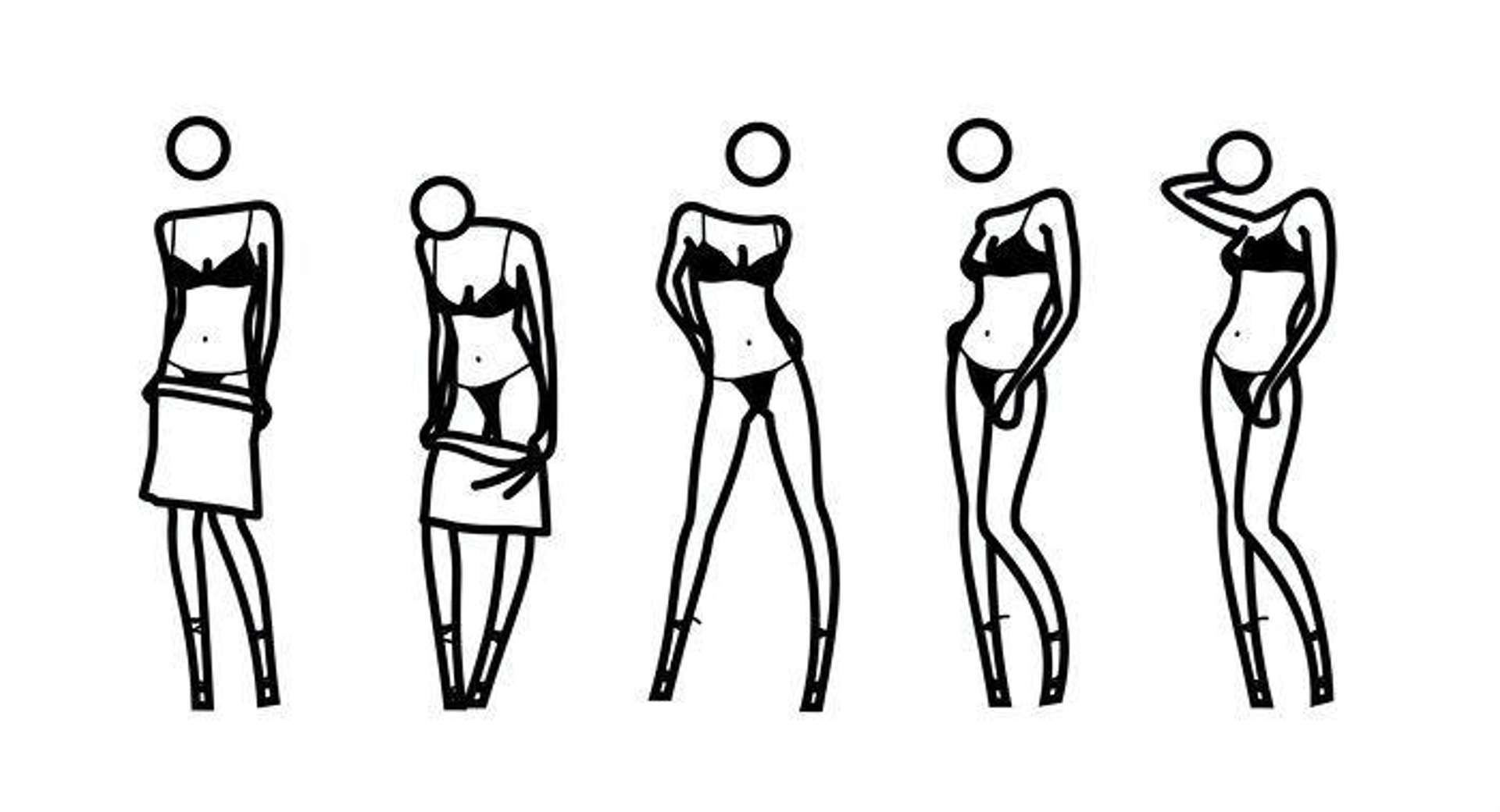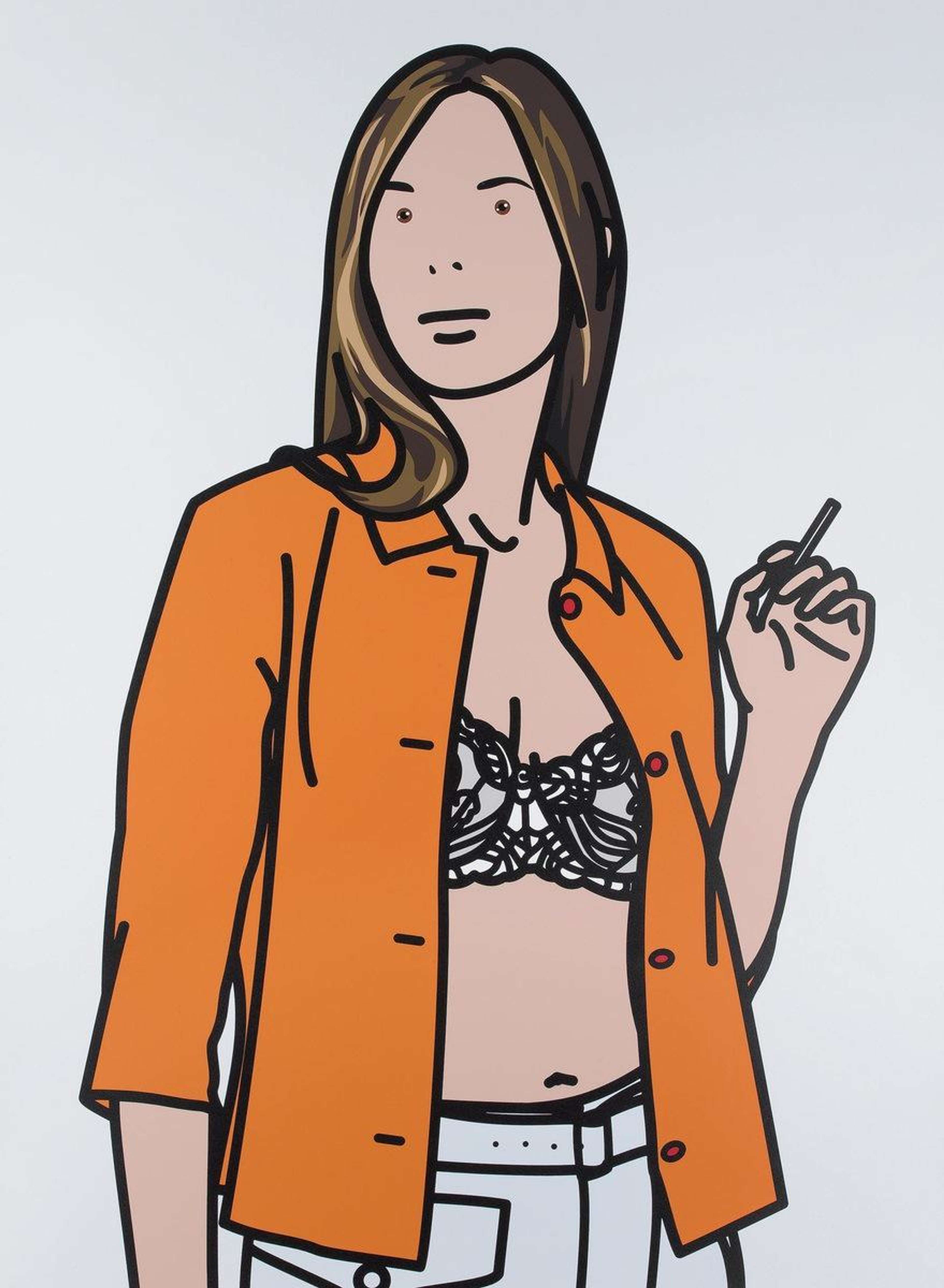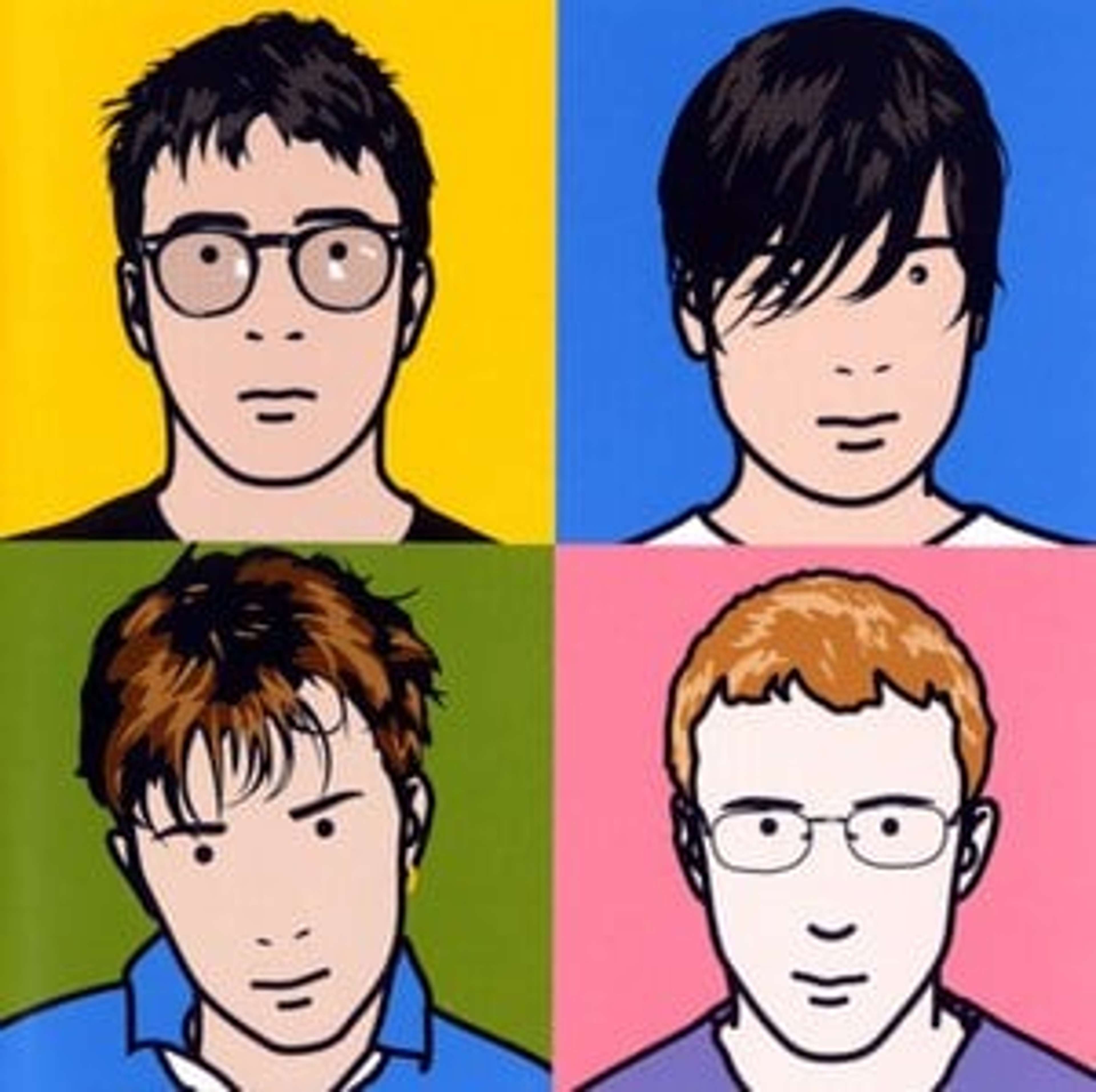 Best Of © Julian Opie 2000
Best Of © Julian Opie 2000
Julian Opie
295 works
Combining minimalism with Pop Art in a strikingly contemporary style, Julian Opie has been making work that resonates with art lovers across the world for over two decades. Here we take a look at his most famous artworks, from his quadruple portrait of Britpop band Blur to his animated walking figures.
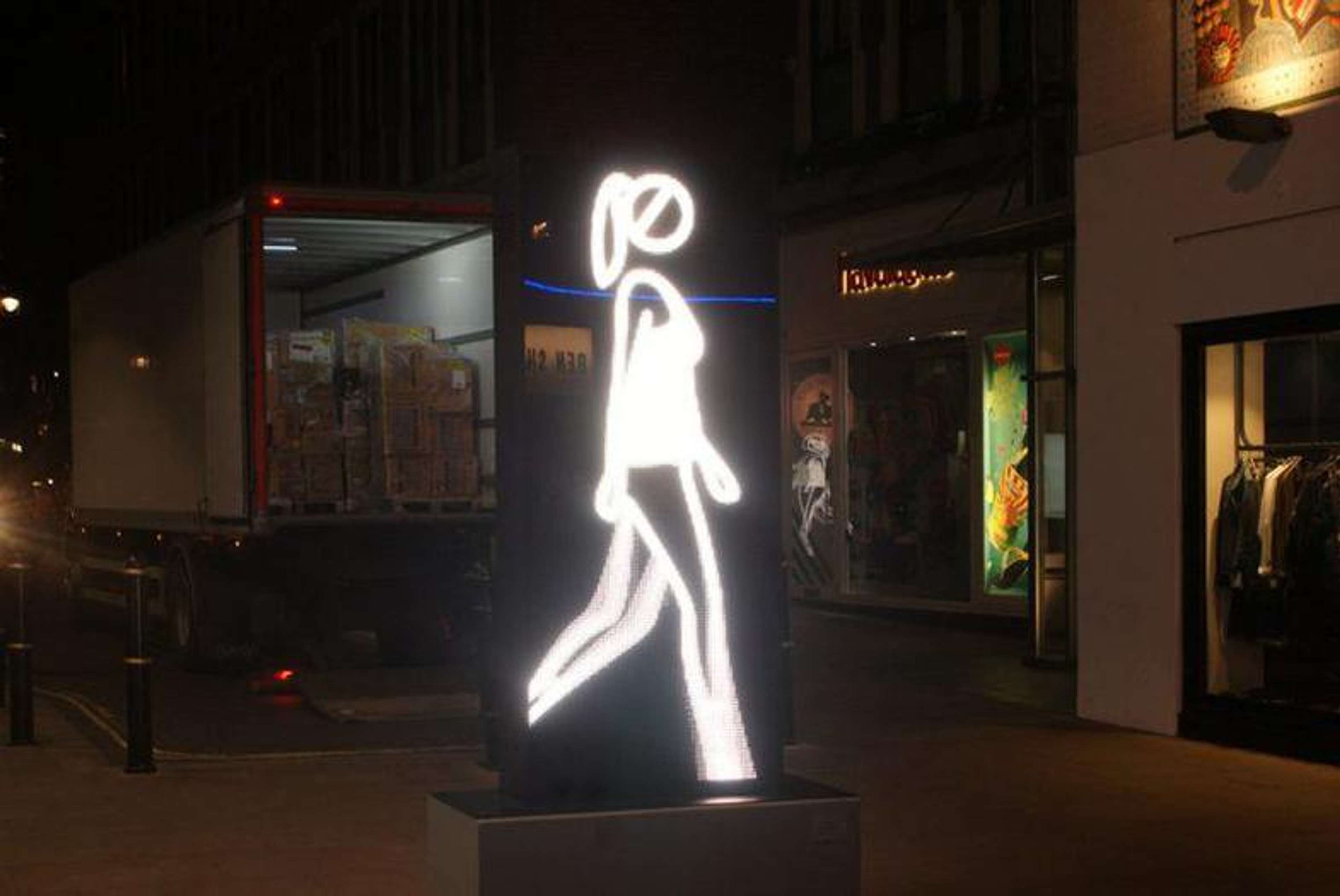 Shaida Walking ©Julian Opie 2015
Shaida Walking ©Julian Opie 2015Shaida Walking
In 2015 Opie’s animated sculpture Shaida Walking was permanently installed on London’s Carnaby Street. Located in the busiest shopping area of the city, Opie wanted the figure of the walking woman “to stride endlessly as a living drawing and as part of the crowd.”
How did Opie create Shaida Walking?
In order to create the Shaida Walking, Opie filmed a model walking on a treadmill and translated the film into his signature style, stripping the figure down to its essential lines; he then made a hand drawing of each individual frame to create an animated film, which is shown on an LED (light-emitting diode) display – of the kind that is normally used for billboards and information panels. In this way he produced a piece that strived to the universality of the signs we encounter in everyday life, such as the global symbol for male and female toilets which Opie claims originally inspired his minimal figures.
Imagine You Are…
While Opie is perhaps best known for his figures and portraits, he also has a strong interest in landscape and how natural features such as trees and hills can also be reduced to blocks of colour and line. The Imagine You Are… series features images of an empty road; curving away from the viewer it is flanked by nondescript greenery and framed by a flat blue sky. Simplified to its essentials, the works recall cartoon or video game backgrounds, and seem to invite the viewer to fill the rest in for themselves.
Jacques Villeneuve
A 2002 variation of the Imagine You Are… series saw Opie placing a portrait of Formula One driver Jacques Villeneuve next to an image of a racing track. Villeneuve is shown gazing out at the viewer, his head tilted slightly away from us, his face occasionally obscured by his helmet which reflects an advertisement for Lucky Strike cigarettes. “The road is temptingly there. It was inspired by computer-game landscapes. I’m creating the illusion of movement,” explained Opie.
Shahnoza
Opie has also painted a series of sexualised images of women as reclining nudes, strippers or pole dancers. Perhaps his most famous work in this vein is the This Is Shahnoza series. One of the highest recorded sales from this series was This Is Shahnoza (in 3 parts) no 6, which achieved a price of £25,000 with fees.
Who is Julian Opie’s model Shahnoza?
Shahnoza was an Iranian pole dancer who Opie met in a Soho strip club – the artist was searching for someone “who danced well”, he said, to pose for his paintings. “I’d bought the pole on the internet;” he explained in a 2011 interview, “I thought I could get more dynamic poses from models.” Shahnoza spent the next two days dancing for Opie at his East London studio, where he took over 2,000 photographs of her from which to work. These images became a series of paintings, prints and LED animations which are highly sought after on the market today.
 Aniela At The Spring 1 © Julian Opie 2011
Aniela At The Spring 1 © Julian Opie 2011Aniela Opie
Opie’s wife Aniela is also known to be a regular sitter for the artist. This has resulted in a series inspired by Renaissance and neoclassical paintings of Greek goddesses such as Aphrodite, where the painter’s wife is portrayed nude, occasionally wrapped in drapery which has been reduced to its most essential elements, or holding a Grecian urn. In each her face is featureless, her body stripped to a handful of lines, however in later portraits Aniela is shown in close-up, with her face filled in. Here her personality is returned to her as light and shadow give life to her face and her confident expression gazes out at the viewer.
 Best Of © Julian Opie 2000
Best Of © Julian Opie 2000Blur
In 2000 Britpop band Blur released their Best Of album, propelling them to the top of the charts once again and making Julian Opie a household name. His award winning cover for the LP featured portraits of each band member arranged in a grid in true Warhol style. Now hanging in the National Portrait Gallery, the print series features the group’s lead guitarist Graham Coxon on an orange background, bassist Alex James on a deep blue, drummer Dave Rowntree on hot pink and finally lead singer Damon Albarn on green. While their faces have been stripped of tone and detail, their eyes reduced to mere dots, each band member has a unique expression and stance, demonstrating Opie’s ability to convey a sitter’s personality in just a handful of lines.
 James Dyson ('James, Inventor') @ Julian Opie 2010
James Dyson ('James, Inventor') @ Julian Opie 2010James Dyson
Created 10 years after the Blur album, Opie’s portrait of James Dyson shows how the artist’s style has evolved in the latter part of his career. Here he depicts the British inventor’s face half in shadow to create a chiaroscuro effect that shows a marked departure from his earlier works. His facial features are also clearly picked out in detail, where before they would have been just lines and dots. Now in his 70s, Dyson achieved fame for his vacuum cleaners in the 1990s and went on to become one of the country’s leading inventors.
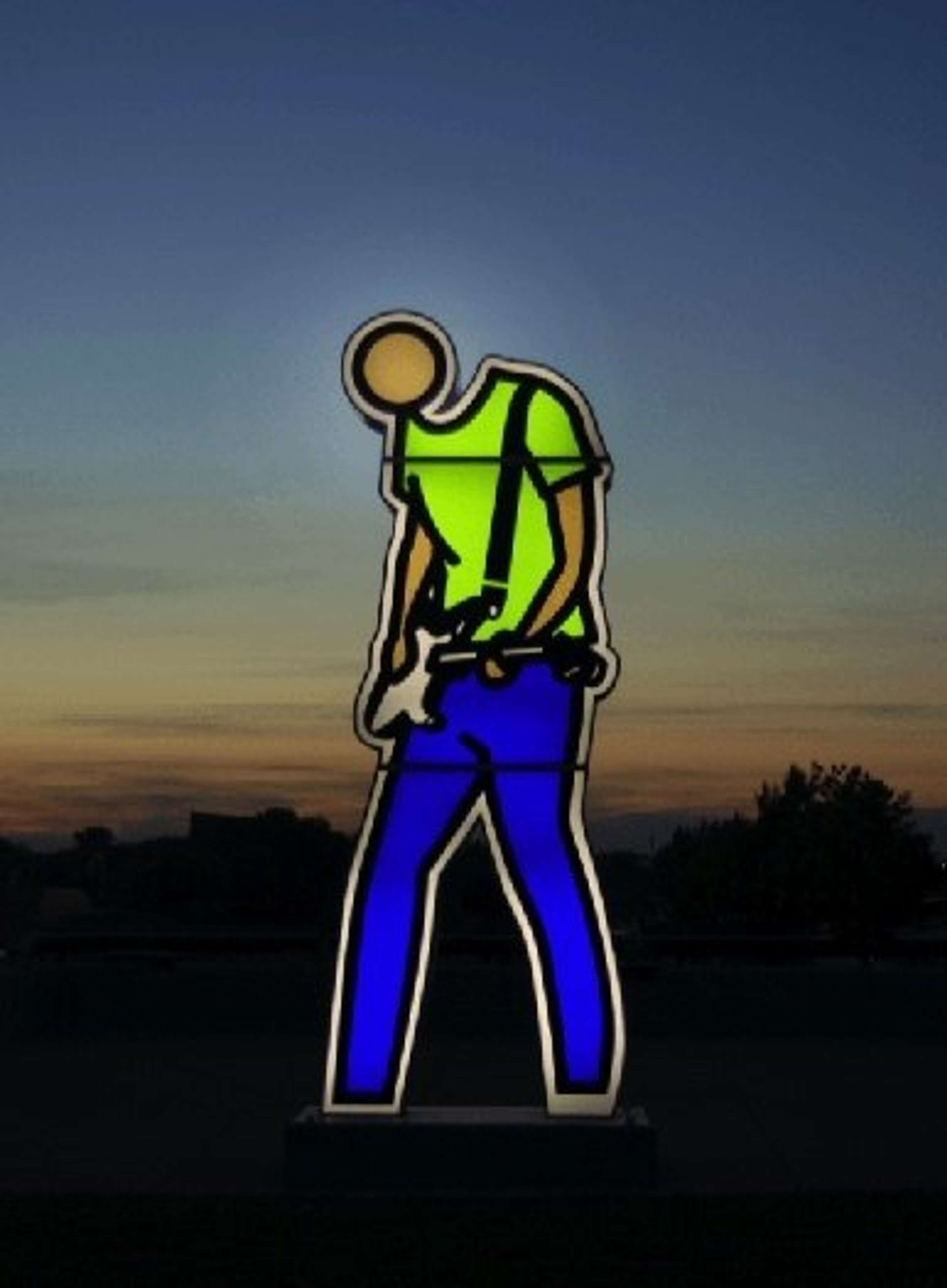 Bryan Plays Guitar © Julian Opie 2006
Bryan Plays Guitar © Julian Opie 2006Bryan Adams
Following on from his success with his portraits of Blur, in the early 2000s Opie painted a series of images of Canadian rockstar Bryan Adams. Considered to be an homage to Andy Warhol’s Elvis, Adams is shown with a guitar, which is used as a kind of prop, because, as he explains, “Men are perhaps not intrinsically easy to look at, or are less easy about being looked at and need to be doing something.” The works came about as part of a collaboration with Adams who created a piece of music to accompany them. In 2006, Opie transformed his paintings of Adams into a monumental illuminated sculpture for the city of Indianapolis.
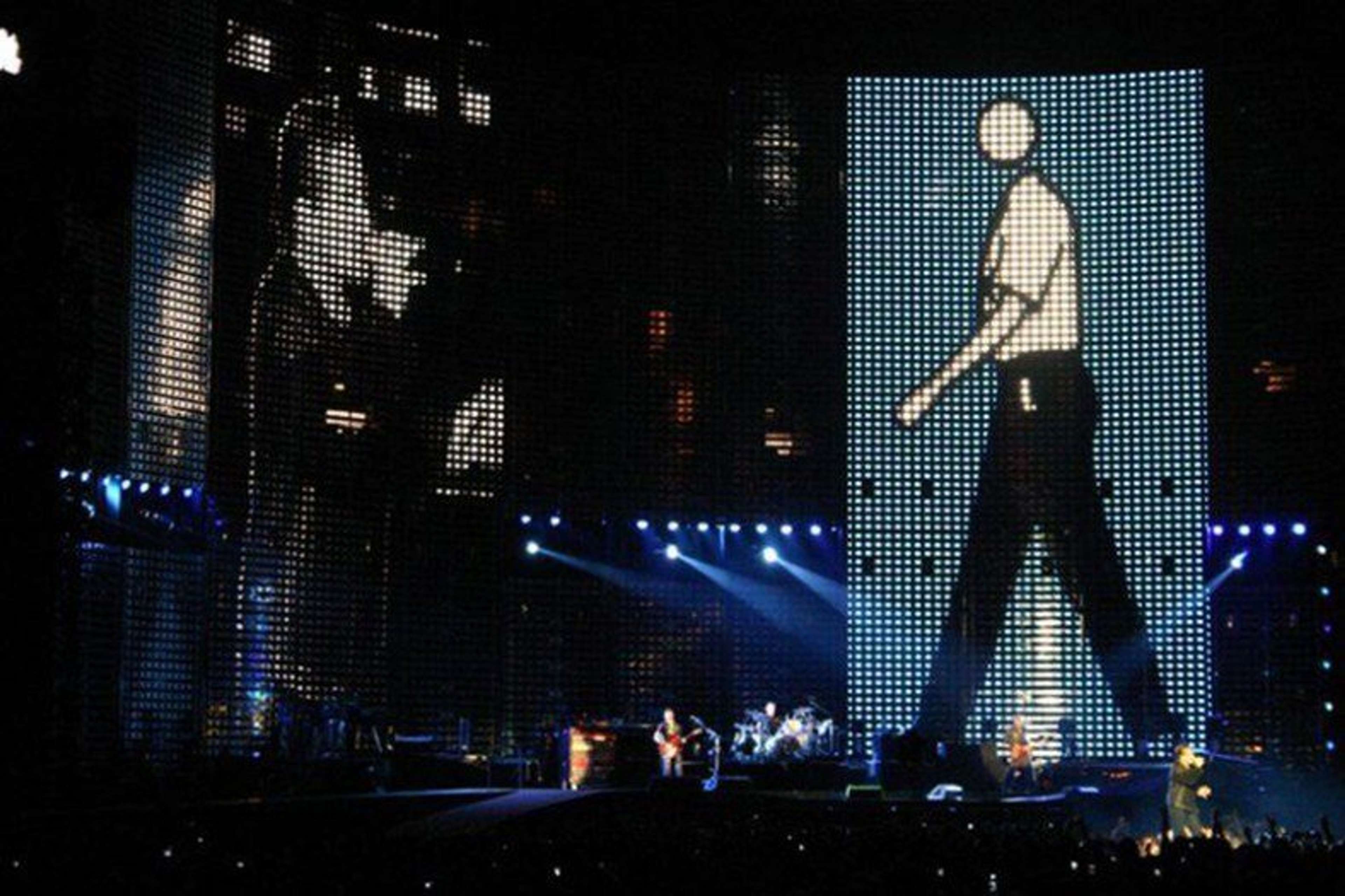 U2, Vertigo World Tour © Julian Opie 2005
U2, Vertigo World Tour © Julian Opie 2005U2
In 2005, Opie created a huge LED display that would form the stage backdrop for U2’s Vertigo World Tour. The work showed one of his signature figures walking in time to the music in a short sleeved white shirt and black trousers. Their faces, as with all his walking figures, were blank.
Patrons
In keeping with his interest in Old Master portraiture, Opie has also embarked on a series of commissioned portraits during his long career. Explaining his interest in the dynamic between patron/sitter and artist he has said, “It doesn’t just affect one’s understanding of the painting and the relationship one feels with the sitter but also seems to show in the poses and expressions. I find this interesting and it helps in my attempt to make these images feel like familiar, museum portrait paintings.”
How much does a portrait by Julian Opie cost?
There are obvious monetary benefits to this kind of patronage as well. In a 2012 interview, Opie declared, “It costs £25,000 to be my model for the day, and then you can buy whatever work comes out of that day for the usual price – about £45,000 for a [full length] work.” The resulting series includes portraits of bankers and oligarchs, as well as the children of his wealthy patrons, some of which are compiled in the limited edition book, Twenty Six Portraits.


